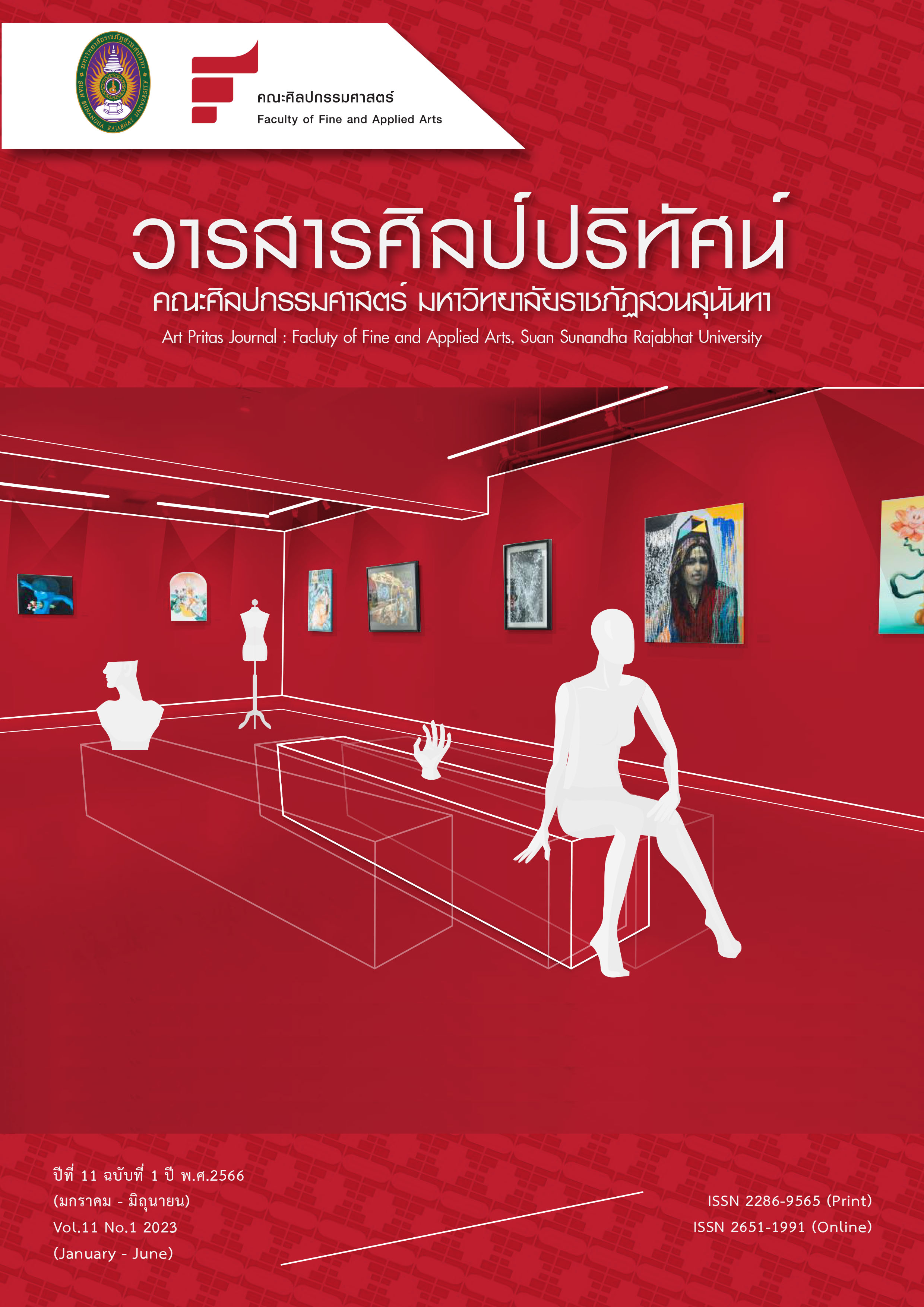URBAN COLOR DESIGN IN JIUJIANG URBAN PLANNING
Main Article Content
บทคัดย่อ
The objectives of this study are: 1) to study the importance of color in art and culture, landscape colors related to urban planning of Jiujiang city; and 2) to analyze and generate color matching schemes for color combination design of urban buildings in urban planning and simulated urban planning. This study was conducted by Mixed Methods Research, Qualitative Research and Quantitative Research. In the qualitative research methodology, interviews and questionnaires were conducted and conducted for population and samples of 16 Jiujiang residents and 9 foreign visitors from other cities in China; in the quantitative research method, 30 samples were evaluated for analysis, development and design satisfaction.
The results show that the overall color of the city in the landscape is related to urban planning, including: Jiujiang city architectural color, public place color, natural color in order to reflect the ecological beauty and cultural heritage, can add characteristics and charm through the harmonious and orderly urban color. Urban color has outstanding cultural connotation and characteristics, and creates a color combination scheme for urban architectural design in urban planning and simulated urban planning. According to the local traditional color survey based on natural color, collection of landscape, natural environment and art and cultural information, the cultural image, historical resources and modern cultural resources, to facilitate memory and popularization.
Article Details

อนุญาตภายใต้เงื่อนไข Creative Commons Attribution-NonCommercial-NoDerivatives 4.0 International License.
เนื้อหาและข้อมูลในบทความที่ลงตีพิมพ์ในวารสารศิลป์ปริทัศน์ ถือเป็นข้อคิดเห็นและความรับผิดชอบของผู้เขียนบทความโดยตรง ซึ่งกองบรรณาธิการวารสารไม่จำเป็นต้องเห็นด้วย หรือร่วมรับผิดชอบใดๆ
บทความ ข้อมูล เนื้อหา รูปภาพ ฯลฯ ที่ได้รับการตีพิมพ์ในวารสารศิลป์ปริทัศน์ถือเป็นลิขสิทธิ์ของวารสารศิลป์ปริทัศน์
เอกสารอ้างอิง
Bian, X., & Li, X. (2015). Discussion on urban color planning and design. Architectural Engineering Technology and
Design, 6.
Dingil, A, E., Rupi, F., Schweizer, J., Stasiskiene, Z., & Aalipour, K. (2019). The Role of Culture in Urban Travel Patterns.
Quantitative Analyses of Urban Areas Based on Hofstede’s Culture Dimensions: Soc. Sci, 8.
Hussein, F., Stephens, J., & Tiwari R. (2020). Grounded Theory as an Approach for Exploring the Effect of Cultural
Memory on Psychosocial Well-Being in Historic Urban Landscapes. Soc. Sci, 9.
Li, W. Q., Tian, X., Wu, H., & Yang, C, C. (2018). Analysis on the Application of Regional Color Based on Regional
Culture in Urban Color Construction. Beauty and Times City Edition, 9.
Sun, T., & Ying, L. (2015). Research on Urban Color Design Based on Urban Culture Communication-Taking Suzhou
Urban Color as an Example. China's newspaper industry, 2.
Wu, W., & L, H, H. (2006). Color Landscape Planning in Urban Environments. Journal of Chongqing Jianzhu
University, 3.
Zhao, J. (2014). On the Significance and Measures of Urban Color Planning and Design. Art and Design Theory,
Zhan, W., & Zhou, Y, Y. (2011). Planning and design of urban color. Flying Apsaras, 2.


